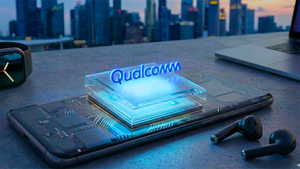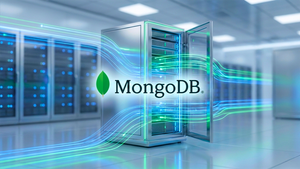
In a groundbreaking move set to redefine the landscape of digital creativity, Adobe (NASDAQ: ADBE) has announced the immediate integration of Google's (NASDAQ: GOOGL) cutting-edge AI model, Gemini 3-powered Nano Banana Pro, into its flagship creative applications, Adobe Firefly and Photoshop. This strategic collaboration, unveiled just days after Google's official launch of the Nano Banana Pro on November 20, 2025, marks a significant leap forward in empowering creators with unparalleled AI capabilities directly within their familiar workflows. The integration promises to streamline complex design tasks, unlock new artistic possibilities, and deliver studio-grade visual content with unprecedented control and fidelity, effectively bringing a new era of intelligent design to the fingertips of millions of professionals worldwide.
This rapid deployment underscores Adobe's commitment to a multi-model approach, complementing its own robust Firefly Image Model 5 and an expanding ecosystem of partner AI technologies. By embedding Nano Banana Pro directly within Photoshop's Generative Fill and Firefly's Text-to-Image features, Adobe aims to eliminate the friction of managing disparate AI tools and subscriptions, fostering a more fluid and efficient creative process. To accelerate adoption and celebrate this milestone, Adobe is offering unlimited image generations through Firefly and its integrated partner models, including Nano Banana Pro, until December 1, 2025, for all Creative Cloud Pro and Firefly plan subscribers, signaling a clear intent to democratize access to the most advanced AI in creative design.
Technical Prowess: Unpacking Nano Banana Pro's Creative Revolution
At the heart of this integration lies Google's Gemini 3-powered Nano Banana Pro, a model that represents the pinnacle of AI-driven image generation and editing. Built upon the robust Gemini 3 Pro system, Nano Banana Pro is engineered for precision and creative control, setting a new benchmark for what AI can achieve in visual arts. Its capabilities extend far beyond simple image generation, offering sophisticated features that directly address long-standing challenges in digital content creation.
Key technical specifications and capabilities include the ability to generate high-resolution outputs, supporting images in 2K and even up to 4K, ensuring print-quality, ultra-sharp visuals suitable for the most demanding professional applications. A standout feature is its refined editing functionality, allowing creators to manipulate specific elements within an image using natural language prompts. Users can precisely adjust aspect ratios, boost resolution, and even alter intricate details like camera angles and lighting, transforming a bright daytime scene into a moody nighttime atmosphere with a simple text command. This level of granular control marks a significant departure from previous generative AI models, which often required extensive post-processing or lacked the nuanced understanding of context.
Furthermore, Nano Banana Pro excels in an area where many AI models falter: seamless and legible text generation within images. It not only produces clear, well-integrated text but also supports multilingual text, enabling creators to localize visuals with translated content effortlessly. Leveraging Google Search's vast knowledge base, the model boasts enhanced world knowledge and factual accuracy, crucial for generating precise diagrams, infographics, or historically consistent scenes. For branding and character design, it offers remarkable consistency, maintaining character appearance across various edits—even when changing clothing, hairstyles, or backgrounds—and utilizes expanded visual context windows to uphold brand fidelity. The model's capacity for complex composition handling is equally impressive, capable of combining up to 14 reference images and maintaining the appearance of up to 5 consistent characters within a single prompt, facilitating the creation of intricate storyboards and elaborate scenes. Initial reactions from the AI research community and industry experts have been overwhelmingly positive, highlighting Nano Banana Pro's advanced capabilities as a significant leap forward in multimodal AI for creative applications, praising its fidelity, control, and practical utility.
Shifting Sands: Competitive Implications and Market Positioning
The integration of Google's Gemini 3 Nano Banana Pro into Adobe's creative suite sends ripple effects across the AI and tech industries, fundamentally reshaping competitive dynamics and market positioning. Adobe (NASDAQ: ADBE) stands to gain immensely, solidifying its role as the central ecosystem for creative professionals by offering a best-of-breed, multi-model approach. This strategy allows Adobe to provide unparalleled choice and flexibility, ensuring its users have access to the most advanced AI tools without having to venture outside the Creative Cloud environment. By integrating a leading external model like Nano Banana Pro alongside its proprietary Firefly models, Adobe enhances its value proposition, potentially attracting new subscribers and further entrenching its existing user base.
For Google (NASDAQ: GOOGL), this partnership represents a significant strategic win, extending the reach and impact of its Gemini 3 Pro AI system into the professional creative market. It validates Google's investment in advanced generative AI and positions Nano Banana Pro as a top-tier model for visual content creation. This collaboration not only showcases Google's technical prowess but also strengthens its enterprise AI offerings, demonstrating its ability to deliver powerful, production-ready AI solutions to major software vendors. The move also intensifies the competition among major AI labs, as other players in the generative AI space will now face increased pressure to develop models with comparable fidelity, control, and integration capabilities to compete with the Adobe-Google synergy.
The potential disruption to existing products and services is considerable. Smaller AI startups specializing in niche image generation or editing tools may find it harder to compete with the comprehensive, integrated solutions now offered by Adobe. Creators, no longer needing to subscribe to multiple standalone AI services, might consolidate their spending within the Adobe ecosystem. This development underscores a broader trend: the convergence of powerful foundation models with established application platforms, leading to more seamless and feature-rich user experiences. Adobe's market positioning is significantly bolstered, transforming it from a software provider into an intelligent creative hub that curates and integrates the best AI technologies available, offering a strategic advantage in a rapidly evolving AI-driven creative economy.
A Broader Canvas: AI's Evolving Landscape and Societal Impacts
The integration of Google's Gemini 3 Nano Banana Pro into Adobe's creative applications is more than just a product update; it's a pivotal moment reflecting broader trends and impacts within the AI landscape. This development signifies the accelerating democratization of advanced AI, making sophisticated generative capabilities accessible to a wider audience of creative professionals who may not have the technical expertise to interact directly with AI models. It pushes the boundaries of multimodal AI, demonstrating how large language models (LLMs) can be effectively combined with visual generation capabilities to create truly intelligent creative assistants.
The impact on creative industries is profound. Designers, photographers, marketers, and artists can now achieve unprecedented levels of productivity and explore new creative avenues previously constrained by time, budget, or technical skill. The ability to generate high-fidelity images, refine details with text prompts, and ensure brand consistency at scale could revolutionize advertising, media production, and digital art. However, alongside these immense benefits, potential concerns also emerge. The ease of generating highly realistic and editable images raises questions about authenticity, deepfakes, and the ethical implications of AI-generated content. The potential for job displacement in roles focused on repetitive or less complex image manipulation tasks is also a topic of ongoing discussion.
Comparing this to previous AI milestones, Nano Banana Pro's integration into Adobe's professional tools marks a significant step beyond earlier generative AI models that often produced less refined or consistent outputs. It moves AI from a novel curiosity to an indispensable, high-performance tool for professional creative workflows, akin to how early desktop publishing software revolutionized print media. This development fits into the broader trend of AI becoming an embedded, invisible layer within everyday software, enhancing functionality rather than existing as a separate, specialized tool. The discussion around responsible AI development and deployment becomes even more critical as these powerful tools become mainstream, necessitating robust ethical guidelines and transparency mechanisms to build trust and prevent misuse.
The Horizon: Future Developments and Expert Predictions
Looking ahead, the integration of Google's Gemini 3 Nano Banana Pro into Adobe's creative suite is merely the beginning of a transformative journey for AI in creativity. In the near term, we can expect further refinements to the model's capabilities, potentially including enhanced video generation and editing features, more sophisticated 3D asset creation, and even deeper integration with other Adobe applications like Premiere Pro and After Effects. The "Pro" designation suggests a continuous evolution, with subsequent iterations likely offering even greater control over artistic style, emotional tone, and narrative coherence in generated visuals.
Potential applications and use cases on the horizon are vast. Imagine architects rapidly visualizing complex building designs with photorealistic renderings, game developers instantly generating diverse environmental assets, or fashion designers iterating on garment patterns and textures in real-time. The ability to generate entire campaign mock-ups, complete with localized text and consistent branding, could become a standard workflow. Experts predict that AI will increasingly become a collaborative partner rather than just a tool, learning from user preferences and proactively suggesting creative solutions. The concept of "personalized AI assistants" tailored to individual creative styles is not far-fetched.
However, several challenges need to be addressed. Continued efforts will be required to ensure the ethical and responsible use of generative AI, including combating misinformation and ensuring proper attribution for AI-assisted creations. The computational demands of running such advanced models also present a challenge, necessitating ongoing innovation in hardware and cloud infrastructure. Furthermore, refining the user interface to make these powerful tools intuitive for all skill levels will be crucial for widespread adoption. Experts predict a future where human creativity is amplified, not replaced, by AI, with the emphasis shifting from execution to ideation and strategic direction. The coming years will likely see a blurring of lines between human-generated and AI-generated content, pushing the boundaries of what it means to be a "creator."
A New Chapter in Creative History
The integration of Google's Gemini 3 Nano Banana Pro into Adobe Firefly and Photoshop marks a pivotal moment in the history of artificial intelligence and digital creativity. It represents a significant leap forward in making sophisticated generative AI models not just powerful, but also practical and seamlessly integrated into professional workflows. The key takeaways are clear: enhanced creative control, unprecedented efficiency, and a multi-model approach that empowers creators with choice and flexibility. Adobe's strategic embrace of external AI innovations, combined with Google's cutting-edge model, solidifies both companies' positions at the forefront of the AI-driven creative revolution.
This development will undoubtedly be assessed as a landmark event in AI history, comparable to the advent of digital photography or desktop publishing. It underscores the accelerating pace of AI advancement and its profound implications for how we create, consume, and interact with visual content. The long-term impact will likely see a fundamental transformation of creative industries, fostering new forms of artistry and business models, while simultaneously challenging us to confront complex ethical and societal questions.
In the coming weeks and months, all eyes will be on user adoption rates, the emergence of new creative applications enabled by Nano Banana Pro, and how competitors respond to this formidable partnership. We will also be watching for further developments in responsible AI practices and the evolution of licensing and attribution standards for AI-generated content. The creative world has just opened a new chapter, powered by the intelligent collaboration of human ingenuity and advanced artificial intelligence.
This content is intended for informational purposes only and represents analysis of current AI developments.
TokenRing AI delivers enterprise-grade solutions for multi-agent AI workflow orchestration, AI-powered development tools, and seamless remote collaboration platforms.
For more information, visit https://www.tokenring.ai/.

















